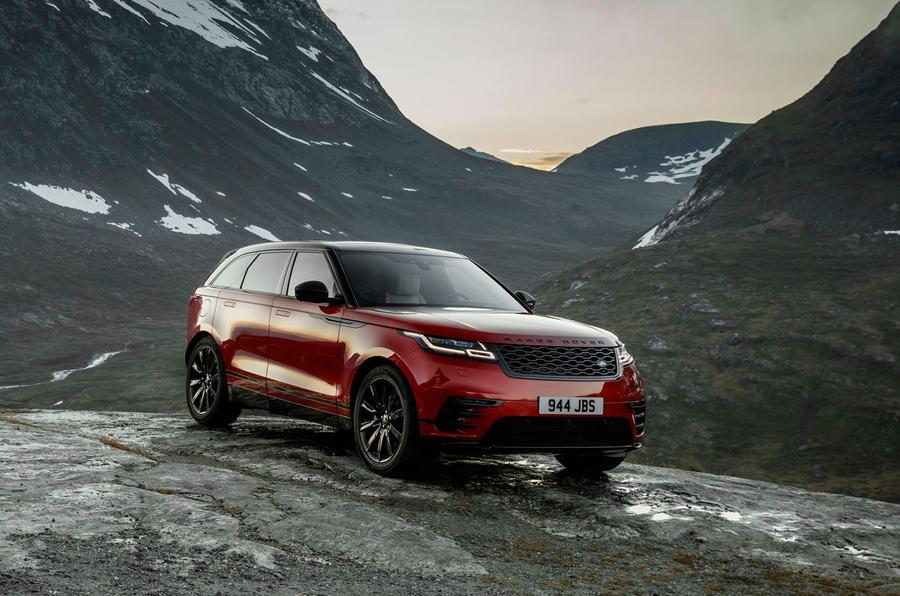Range Rover Velar: reviewed
Is the latest, road-biased version really a Range Rover?

There was a gap. And now, the gap is closed. Behold, and it was good. The gap existed, so we’re told, between the Range Rover Evoque and the Range Rover Sport. With Range Rover being on such a roll these days, it was inevitable that it would plug any gaps where it could see any sales escaping.
The result is not like an ‘Evoque but beefier’, it’s more like a ‘Range Rover Sport minus a bit’. That’s probably not the marketing slogan the company will use, but you get the idea. The platform is based on that used by the Jaguar F-Pace, itself not a totally committed off-roader, and Land Rover says this is the most road-focused vehicle it has ever made. Does that mean it’s no longer the real deal?
It’s certainly gorgeous to look at, and uses a great deal of aluminium in the body, and even composites for the tailgate and magnesium under the bonnet. So it’s not that heavy, very handsome and would you want to take it seriously off-road and damage those panels?
Add to that the four-wheel drive system, which is like that on the F-Pace, and you have a rear-wheel drive vehicle that can bring in the fronts when needed, which isn’t really how it’s been with Range Rover up till now. And there’s no low ratio gearbox and you can’t lock the centre differential.
However there is Terrain Response, which can raise or lower the air suspension and approach, departure and ramp breakover angles are still pretty good. And there’s the option of a limited slip diff for the rear, something which is obviously there to further improve things on the road rather than off it.
On the road it feels totally sorted, with a sense of isolation from everything – the engine, the road, other people, everything. Land Rover says it has put a lot of effort into that aspect, which makes the cabin feel so luxurious. It’s quite a cabin.
There’s the signature use of big blocks of leather on the dashboard, but this time there is a full digital dash, with two large touchscreen panels. Everything, including the infotainment is first-rate, possibly one of the best iterations of digital tech Land Rover has accomplished.
The cabin certainly dazzles and impresses, although if you look closely some of it is perhaps a few percentage points away from a full-on Range Rover. But at least it’s spacious, with loads of room front and rear. And that’s despite there being a clear decision to put the rear seats slightly forward of where they could be, so as to make a really huge boot, at 673 litres.
However, while you’re sat in modern, premium luxury, it’s surprising that the scruffy roads we drove on, with a speed limit of 50mph, caused a few upsets to the cabin at lower speeds. At higher speeds it’s like the Velar simply flattens obstacles in its way but the 21in or 22in wheels did allow a few thwacks to intrude into the monastic stillness of the cabin at low speed.
We’d need a proper test on British roads to definitively say how it behaves in this country.
We tried the Velar with a brace of V6 engines, the 296bhp V6 diesel and the 376bhp V6 petrol. Both worked perfectly with the eight-speed auto transmission, which slickly switches gears with the skill of a croupier in Monaco. There are some four-cylinder Ingenium options in both petrol and diesel, and they get steel springs with the option of air suspension, which is standard on the V6s.
In theory you could buy a new Velar for just £44,000. But that would mean an unadorned 178bhp four-cylinder Ingenium diesel, and most buyers are expected to be buying much further up the price range. You can spend £60k or £70k pretty easily or if you buy the First Edition then it’s £85.5k.
Those are serious prices, given this is a vehicle based on a platform that in a Jaguar XE starts at well under £30k. But this is a Range Rover after all, it really is. You get the presence, the clever tech, the very premium cabin with that British flair you don’t find in German counterparts, and you get the latest technology.
But there is still a sense that there is a slight dislocation between those top-end prices and the end vehicle, as if Land Rover is really pushing the edges of what the market will accept. But the signs are that the market is more than willing to accept the packages on offer, so we look forward to testing a version on British roads, and seeing plenty more versions on the same roads.
RANGE ROVER VELAR 3.0D R-DYNAMIC HSE
Price £70,530
Engine V6, 2993cc, diesel
Power 296bhp at 4000rpm
Torque 516lb ft at 1500-1750rpm
Gearbox 8-spd automatic
Kerb weight 1959kg
Top speed 150mph
0-60mph 6.1sec
Economy 44.1mpg
CO2/tax band 167g/km, 32%
Graham Scott is a writer for AutoCar.
Subscribe to Independent Premium to bookmark this article
Want to bookmark your favourite articles and stories to read or reference later? Start your Independent Premium subscription today.

Join our commenting forum
Join thought-provoking conversations, follow other Independent readers and see their replies